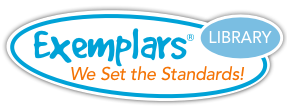Grade 3 - Division Unit
Standards covered:
- 3.4 Number and operations
-
3.4H
Determine the number of objects in each group when a set of objects is partitioned into equal shares or a set of objects is shared equally.
-
3.4I
Determine if a number is even or odd using divisibility rules.
-
3.4J
Determine a quotient using the relationship between multiplication and division.
The Division Unit involves identifying a variety of models to represent the process of division in order to learn how to use it to solve problems. Questions to answer may include:
- How do division situations differ from subtraction situations?
- How do equal-sized groups model division situations in the world outside the classroom? What real-world examples can you think of in which equal-sized groups model division?
- How do arrays and area models represent division situations in the world outside the classroom? What real-world examples can you think of in which arrays can be used to solve division problems?
- What happens if there are leftovers when using division?
- Given a division equation, how can you create a situation to match it?
Summative Assessment Task
Students develop four division equations for dividing tomatoes in to baskets to be sold.
Instructional Tasks/Formative Assessments
Students divide an equal share of pencils in five pencil boxes.
Students write a division task to match a number sentence.
Students design rectangular candle boxes for the Fancy Candle Company.
Students determine a way to find how many spiders or crickets can live in a house.

The N/A classification refers to TEKS Standards that cannot be assessed through problem solving.
For this reason, tasks have not been included for these particular standards.
K.7A K.7B K.9B K.9C K.9D